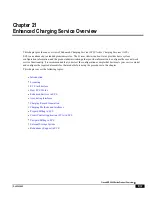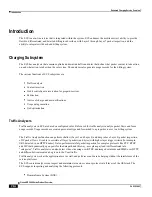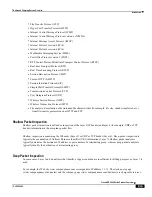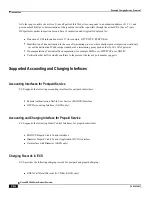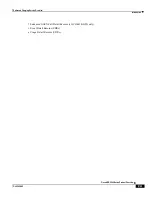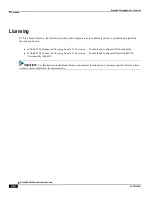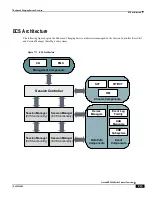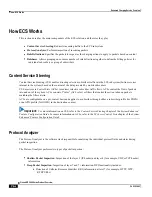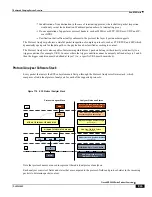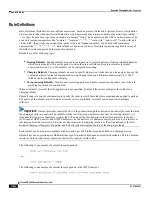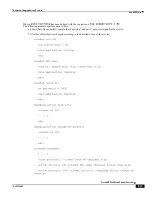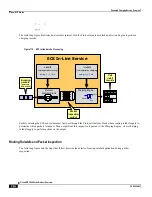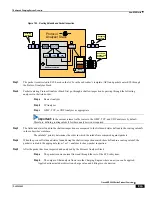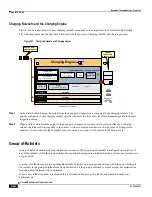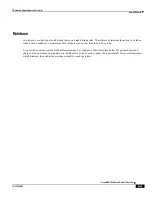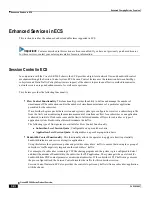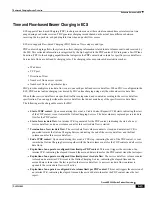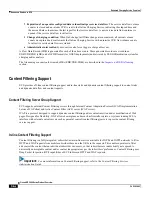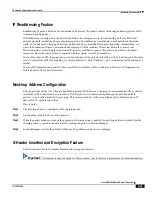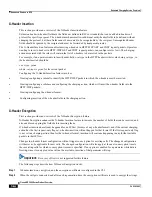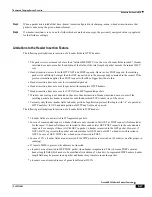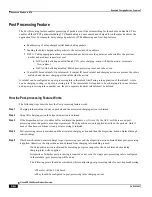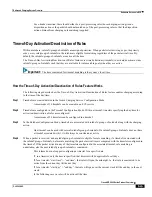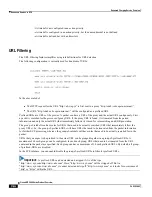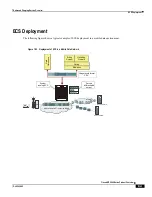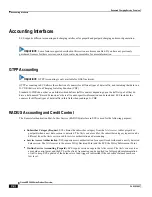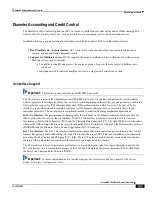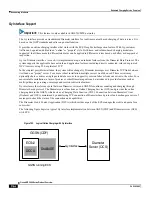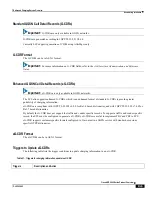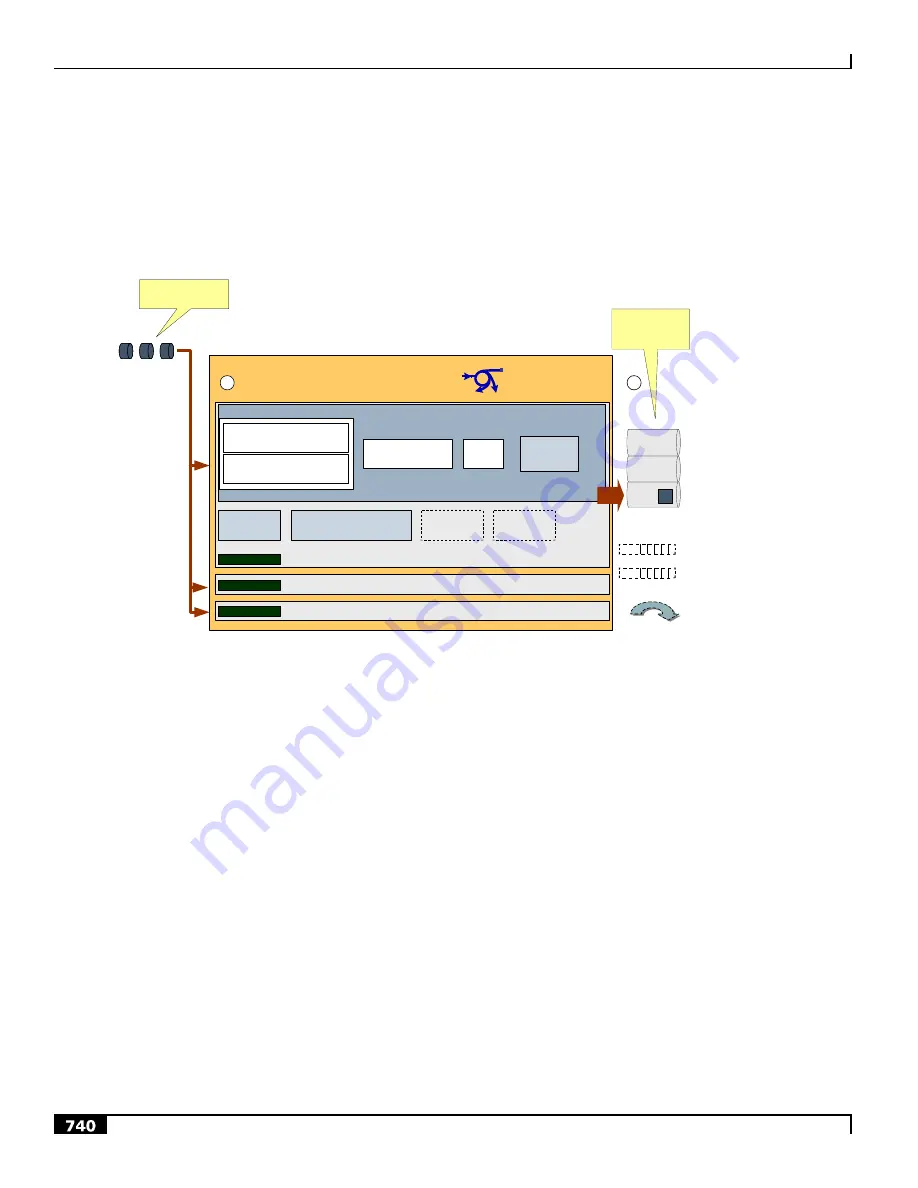
Enhanced Charging Service Overview
▀ How ECS Works
▄ Cisco ASR 5000 Series Product Overview
OL-22938-02
Charging Ruledefs and the Charging Engine
This section describes details of how charging ruledefs are applied to the output from the Protocol Analyzer Stack.
The following figure and the steps that follow describe the process of charging ruledefs and charging engines.
Figure 181.
Charging Ruledefs and Charging Engine
ruledef
Priority
. . .
Logical Expression
Boolean Expression
Logical Operator
+
+
Value
Logical
Expression
&
&…
Protocol field
(e.g. HTTP.URL, MMS.From, etc.)
Protocol State
(e.g. TCP.State, HTTP.State, etc.)
ruledef
Priority 1
Priority 2
Content ID
Usage
(e.g. IP, HTTP, TCP, UDP)
redirect-to
edr-type
Priority n
(rule-application charging)
(=, !=, endsWith,
startsWith, contains,…)
Charging Engine
block
Xmit
redirect
EDR
Redirection
data flow from
packet inspection
matched
ruledef with
highest priority
1
2
UDR
Step 1
In the Classification Engine, the output from the deep-packet inspection is compared to the charging ruledefs. The
priority configured in each charging ruledef specifies the order in which the ruledefs are compared against the packet
inspection output.
Step 2
When a field or state from the output of the deep-packet inspection matches a field or state defined in a charging
ruledef, the ruledef action is applied to the packet. Actions can include redirection, charge value, or billing record
emission. It is also possible that a match does not occur and no action will be applied to the packet at all.
Group-of-Ruledefs
Group-of-Ruledefs enable grouping ruledefs into categories. When a group-of-ruledefs is configured in a rulebase, if
any of the ruledefs within the group matches, the specified charging-action is performed, any more action instances are
not processed.
A group-of-ruledefs may contain optimizable ruledefs. Whether a group is optimized or not is decided on whether all
the ruledefs in the group-of-ruledefs can be optimized, and if the group is included in a rulebase that has optimization
turned on, then the group will be optimized.
When a new ruledef is added, it is checked if it is included in any group-of-ruledefs, and whether it needs to be
optimized, etc.
Содержание ASR 5000 Series
Страница 1: ......
Страница 26: ......
Страница 48: ...New In Release 10 0 SCM Features Cisco ASR 5000 Series Product Overview OL 22938 02 ...
Страница 50: ......
Страница 58: ......
Страница 67: ...Product Service and Feature Licenses Default Licenses Cisco ASR 5000 Series Product Overview OL 22938 02 ...
Страница 68: ......
Страница 126: ......
Страница 138: ......
Страница 146: ......
Страница 218: ......
Страница 236: ......
Страница 356: ......
Страница 374: ......
Страница 422: ......
Страница 496: ......
Страница 572: ......
Страница 654: ......
Страница 700: ......
Страница 726: ......
Страница 784: ......
Страница 816: ......
Страница 839: ...Network Address Translation Overview How NAT Works Cisco ASR 5000 Series Product Overview OL 22938 02 ...
Страница 841: ...Network Address Translation Overview How NAT Works Cisco ASR 5000 Series Product Overview OL 22938 02 ...
Страница 844: ......
Страница 906: ......
Страница 926: ......
Страница 942: ......
Страница 943: ...Cisco ASR 5000 Series Product Overview OL 22938 02 Chapter 30 Technical Specifications ...
Страница 966: ......
Страница 967: ...Cisco ASR 5000 Series Product Overview OL 22938 02 Chapter 31 Safety Electrical and Environmental Certifications ...
Страница 972: ......


